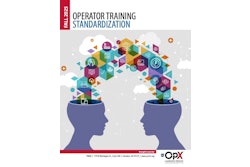
I’ve seen a lot of projects because of my procurement role, but I buy only production equipment, and I get involved before we build the request for proposal (RFP). For every equipment purchase one of my engineers sees, I see 10 or 20.
Through experience (sometimes tough experience), patterns emerge. From patterns, we can develop best practices to avoid trouble. You do the same on your production line today. The more time you spend on the line, the more you understand the limits of that machine, when the wear part is going to fail, the sweet spot on the adjustments, and when the humidity in the plant is going to warp the corrugate enough to jam the case packer.
It’s my job to head off these situations:
• When you’ve told the equipment bidders too little or too much, or you are just confusing them.
• When they’ll miss your unreasonable bid due date, regardless of what the salesperson promised.
• When vendors inflate their prices because they are concerned that working with you isn’t going to go well.
• When vendors are happy to get the order because they see change orders written all over it.
Clarity is the key — clarity within your organization and then with your supplier. Your suppliers need clarity, so they can do their jobs. It also puts them at ease.
Every supplier has had difficult customer projects. Even during the RFP phase, they worry about the end of the project. When will they get paid? Will someone at your factory suddenly demand another feature or key performance indicator? Will you get them samples in time to debug the system before the factory acceptance test (FAT)?
Clarity in the RFP stage gives the bidder a sense that you have your act together.
OpX Leadership Network, a part of the Industry Services platform from PMMI, The Association for Packaging and Processing Technologies, has a growing collection of tools that now includes a Request for Proposal module. It’s a great resource to organize your thoughts and jog your memory.
When developing your project using OpX Leadership Network’s RFP tool, here are a few things to keep in mind.
Decide what you want
Consult stakeholders across the company, including operators and mechanics. The plant and company leadership should know where the market is heading in three years. Maybe the equipment you’re buying can accommodate that, too. Quality assurance and safety departments also have opinions. Then, weed out the needs from the wants to control the costs. (OpX Leadership Network has also developed a Total Cost of Ownership module.)
Specify what results you want (e.g. bottles into a case), but don’t tell bidders how the equipment should do it. That stifles innovation, and every supplier will bid identical equipment. Suppliers are the experts. Let them propose the technical solution.
Communicate what you want
The greatest risk here is that we are accustomed to how our company does business, runs projects, runs a factory, what the must-haves are and what we’re flexible on. But your bidders’ other customers have different requirements and procedures. Don’t expect the bidders to understand your unwritten nuances. Be clear. Start at square one, and then build the details.
Define the terms we all use differently, such as FAT, commissioning and final acceptance. (OpX Leadership Network has also developed an FAT module.)
Subject the documents to peer review before they are issued to bidders. We’re all human, and we may make mistakes in the clarity of the documents.
Give the bidders adequate time to return proposals. Every project team underestimates this. I know your boss keeps asking, “Did the bids come back?” I wish you could all work in an estimating department for a month. They must protect themselves by actually reading that stack of specs you gave them.
Evaluate what you were offered
Another area that is often underestimated is how long it will take your team to select the supplier. I know your boss keeps asking, “Is it ordered?” You will not open the proposals, pick one and place the order. You’ll go back and forth with questions, clarifications and revised proposals. Ask each bidder if the equipment offered meets your specs. Sometimes suppliers just offer you something in the ballpark.
Prepare the order
You’ve picked a supplier, and everyone is excited. But those spec documents in the RFP are old. Sit down and capture everything that changed via addendums, emails and conversations. Update the documents accordingly before they get attached to the order.
Set up your project for success with OpX Leadership Network’s RFP tool at https://bit.ly/2Q9znL9. I’ll see you in the aisles of the next PMMI show.
For more information about OpX Leadership Network’s solutions, visit www.opxleadershipnetwork.org.




















